Contemporary art enlivens old Hakka village
Writer: Cao Zhen | Editor: Zhang Chanwen | From: Shenzhen Daily | Updated: 2023-07-10
A contemporary art exhibition at the centuries-old Fang’er Hakka village serves as a bridge between the past and present, delving into the intricate connections between traditional houses, culture and individuals.
Hosted by the Granary Art Museum and produced by the Reith Culture Arts Center, the exhibition features works by six artists who invited their friends or family members to join in the creation process. Notably, none of the participants are residents of Fang’er Village and through the medium of contemporary art, they engage with the old space, exploring the profound significance of identity, boundaries and relationships.
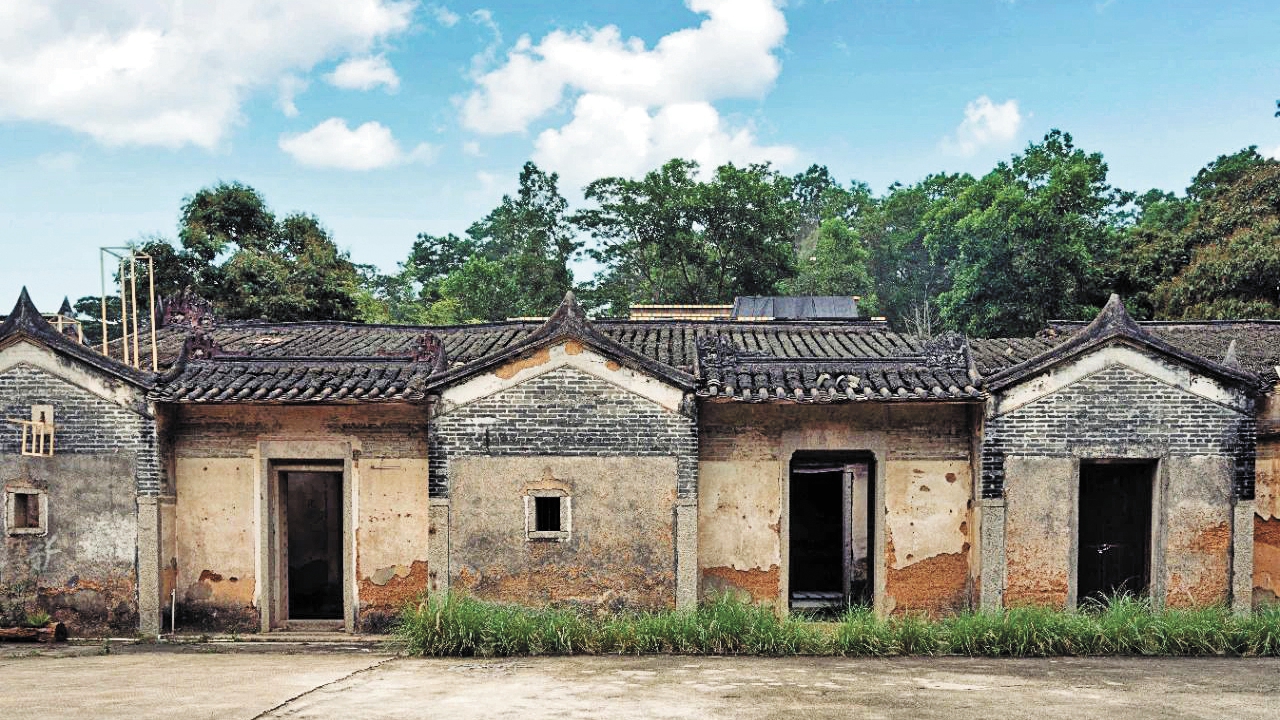
Old Hakka houses at Fang’er Village in Longhua District. Photos from the exhibition organizers
The well-preserved old houses and courtyards, adorned with a picturesque pond and lush plants, provide a breathtaking backdrop for the exhibition. Within these historical spaces, the clash between the traditional and the contemporary becomes palpable, creating a dynamic interplay of the old and the new.
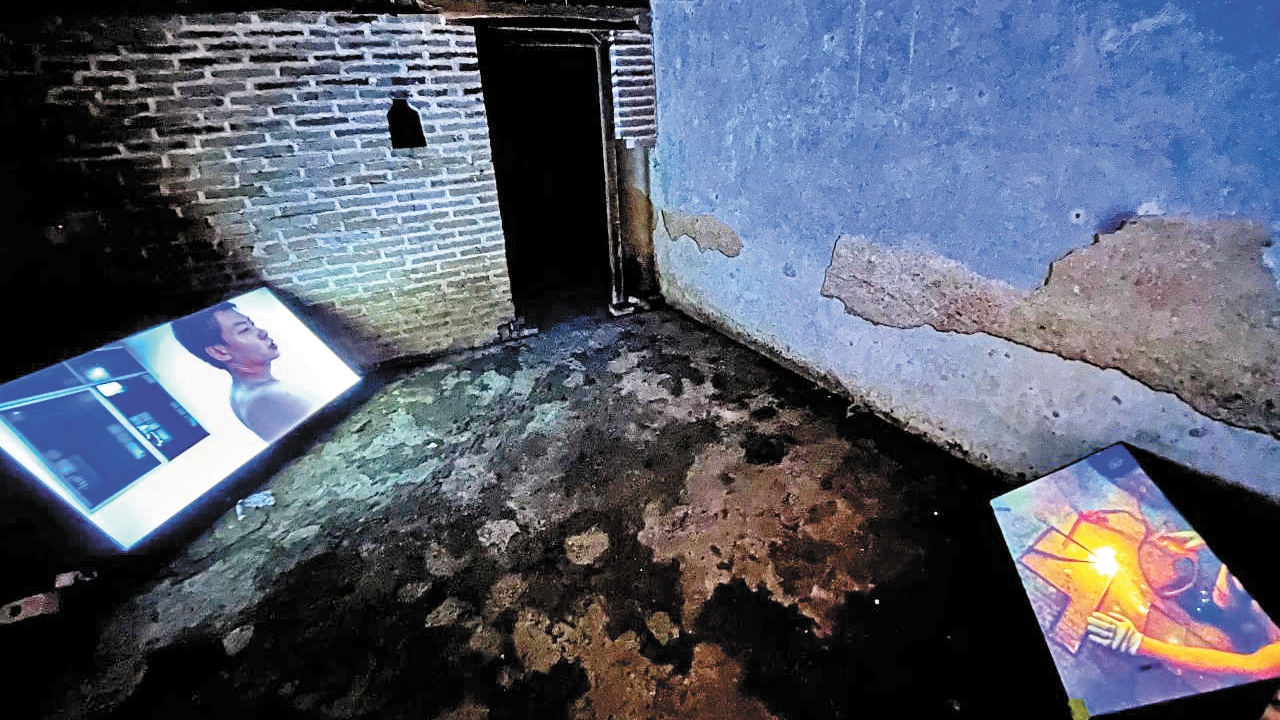
Videos created by Liu Xianglin and Wang Zheng.
Artist Liu Xianglin invited electric welder Wang Zheng to create captivating light installations and videos featuring Wang’s poems that capture Wang’s experiences as a migrant in Shenzhen. By illuminating a dark old house in the village, these poetic lights, as well as the videos, not only breathe life into the surroundings but also evoke a sense of reflection.
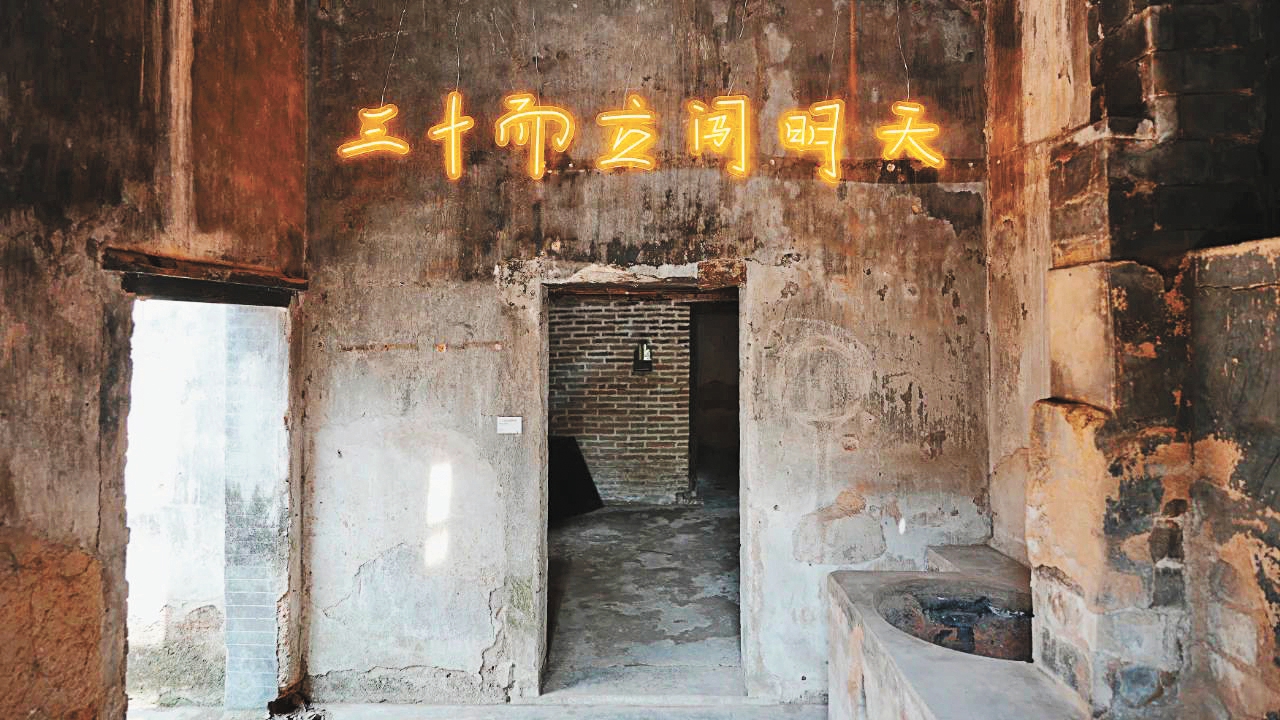
Lights created by Liu Xianglin and Wang Zheng.
Artist Liu Jiaxin, who resides in Futian District’s Yuanling New Village, has adorned an ancient dwelling in Fang’er Village with her artworks, along with pieces by Wang Yezi, Cao Xiang and Catarina Braga. Liu’s friend Yin Hui and Yin’s mother Wu Liuzhen have also added their personal touches to the house to transform it into a living space.

A room decorated by Yin Hui and Wu Liuzhen.
This masterful fusion of artistic expression and domesticity offers a compelling portrayal, akin to a symbolic journey from downtown Futian’s bustling Yuanling area to the serene embrace of the historic Fang’er Village.
Artist Fan Shilei collaborated with friend Ma Zhuang to produce a series of installations and paintings, featuring one remarkable piece inspired by the iconic Mongolian yurts. Placing this unique installation within a traditional Hakka house, the artwork becomes an extraordinary testament to the harmonious fusion of two distinct traditions and provides an absorbing visual dialogue.
Artist Shen Zhi and his collaborator Persian embarked on a reconsideration of neighbor relations in the digital age. Through their multimedia installation, they delineate their year-long online conversations, delving deep into the quest for truth. This artistic endeavor wittily reflects on the nature of connection, authenticity and the blurred boundaries between the virtual and the real.
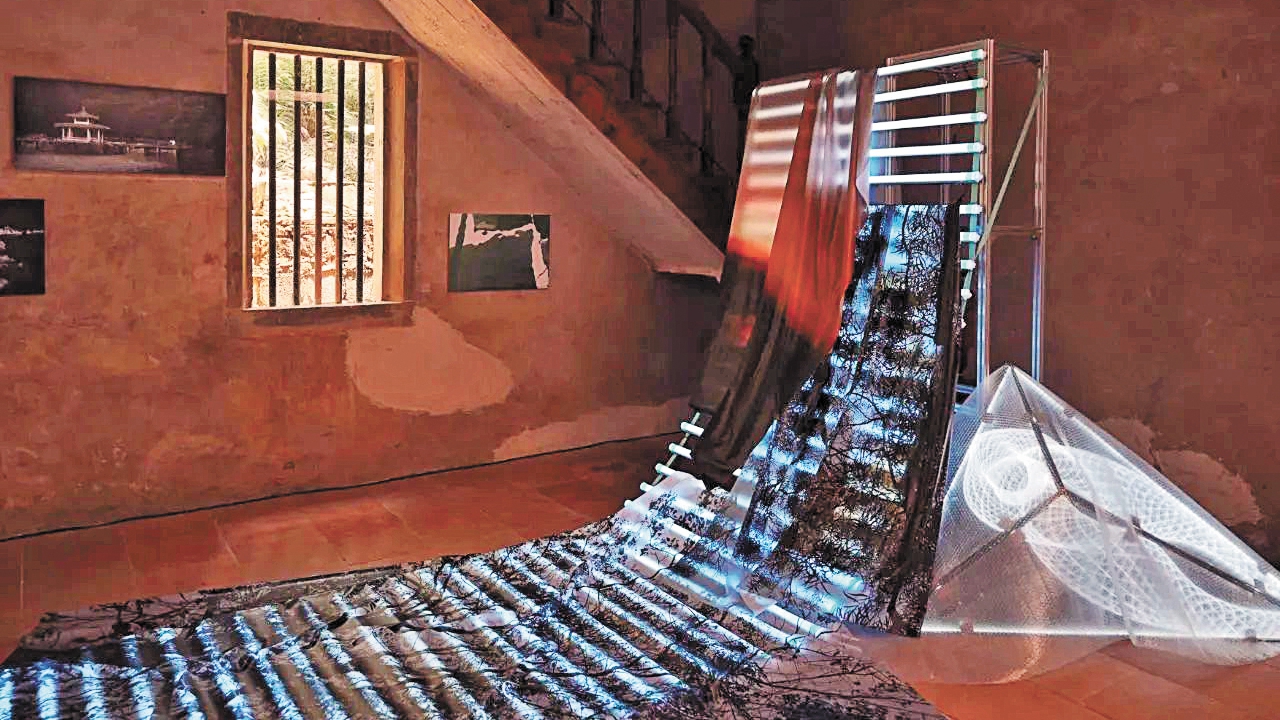
Artworks created by Xu Ziwei and Xu Jianfu.
With skillful employment of light installations, artist Xu Ziwei presents her father Xu Jianfu’s photographic works on nature in a dim room in the village. The natural light cast through the weathered windows, interplaying with shadows, renders a mesmerizing visual spectacle and amplifies the inherent allure of the photographs.
Sound works and videos created by Deng Qipeng, Zhang Hui and Xu Jinlong beckon viewers to immerse themselves in a dynamic dialogue between Shenzhen and Hong Kong. Their artistic creations encapsulate a profound understanding of their respective surroundings.
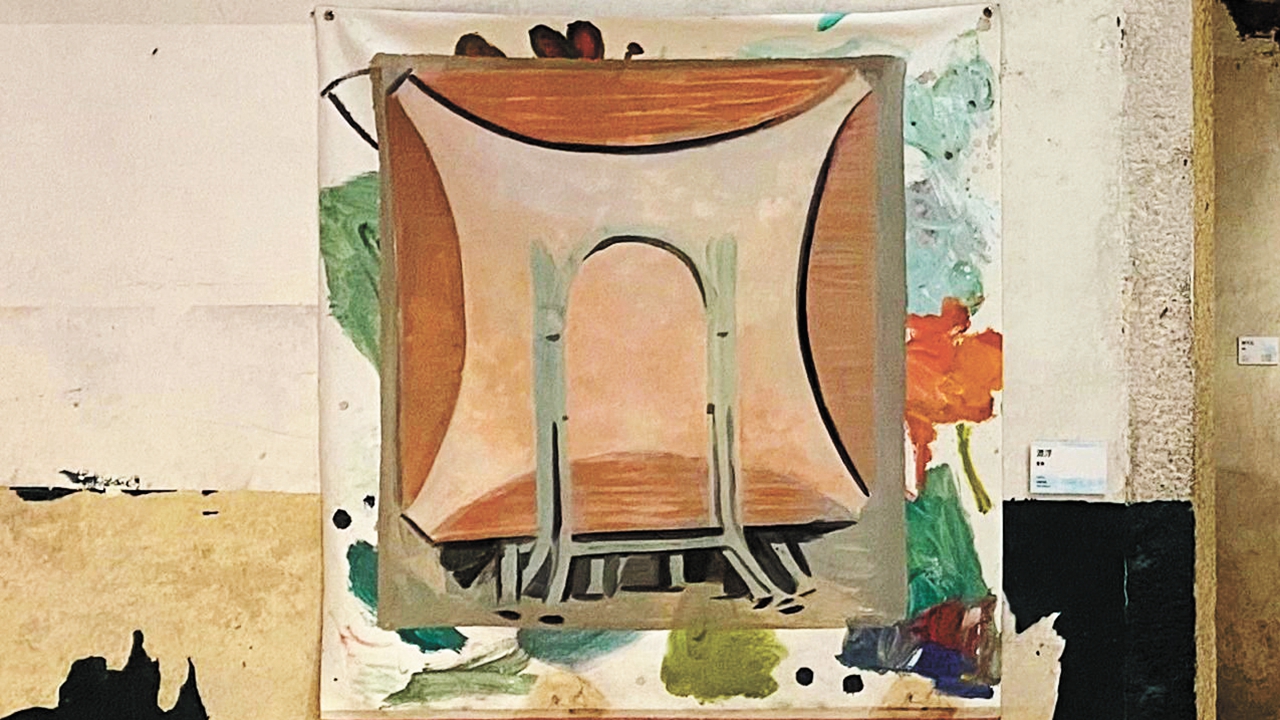
A painting created by Cao Xiang.
Dates: Until July 30
Hours: 10 a.m.-6 p.m., closed Mondays
Venue: Reith Culture Arts Center • Granary Art Museum, Longhua District (瑞思文化艺术中心 • 再饷美术馆)
Metro: Line 4 to Niuhu Station (牛湖站), Exit B